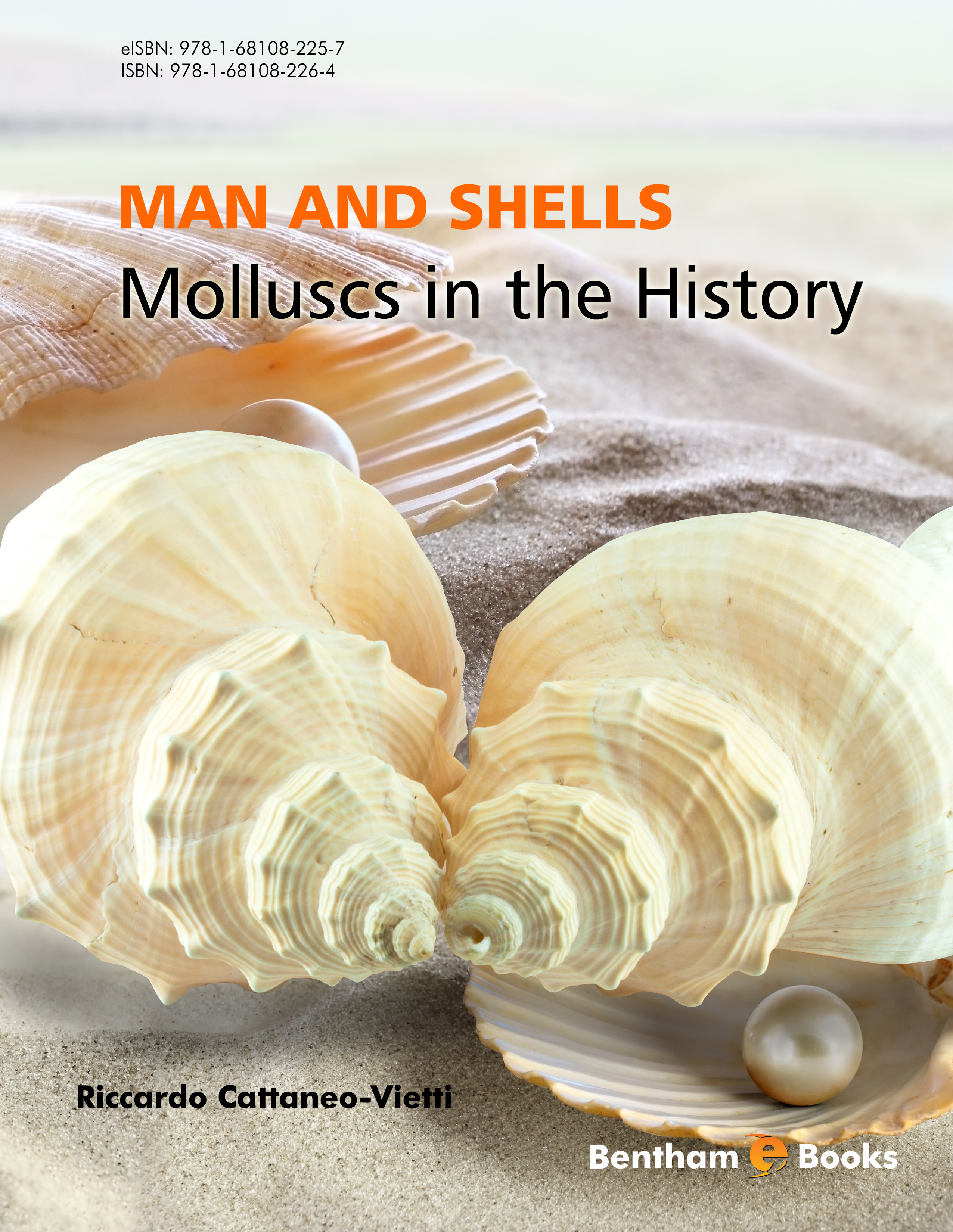Foreword by Nathalie Yonow
Man has always had a close association with molluscs and their shells, be it for
nutrition or inspiration, for art and culture, or for more practical purposes such as
bartering, currency, and medicine. This association goes back to the Palaeolithic,
the beginnings of Man: snails and bivalves were good renewable sources of pro-
tein, and their shells could be utilised in many ways: early Man wasted nothing.
Over time, these shells not only played an important role in the material survival
of Man, but also allowed him to develop his culture, with symbolic values of great
importance. At the dawn of history, shells assumed mythical meanings and rituals,
objects of life and death, of high symbolic value, status, and magic.
Molluscs produce wonderful shells, and these shells display shapes and designs
that have been and still are objects of astonishment for all, and sources of inspira-
tion for artists of all epochs. The sciences, medicine, religion, literature, jewellery,
world trade, and gastronomy all owe much to these producers of shells. They in-
clude species very familiar to us, such as garden snails and nautilus, mussels and
oysters, limpets and clams, and so many others. The contribution that molluscs
have made, and continue to make to both experimental biology and medicine is
immense. Gastropods and squids are still used as lab animals: they seem to have
been designed by Nature itself to facilitate research on neurology and biochemis-
try. Some species even produce chemicals which may be used by pharmacology
in the cure of disease, and the shells themselves are currently being investigated
for the repair of damaged cells causing paralysis (Centre for Paralysis Research at
the Purdue School of Veterinary Medicine, Indiana, USA). The shells of molluscs
from all over the world, land, lakes, and ocean, contain very detailed imprints of
past climate change and with isotope analysis, these signals have been extracted to
demonstrate long-term climate variations.
This book is not simply a treatise of malacology: it is a tribute to a group of or-
ganisms that has always fascinated and inspired Man, accompanying him
throughout his history, a group of organisms that has had and continues to play an
important role in the cultural evolution of Man. The book is not full of scientific
detail, but instead full of prose and poetry, stories and anecdotes based on histori-
cal facts, beautifully illustrated with images of ancient and modern artefacts cele-
brating the amazing world of shells.
Swansea University, Wales, UK
Foreword by Angelo Mojetta
A first thought springs to mind after reading this essay by Riccardo Cattaneo-
Vietti: the molluscs have finally been vindicated, all the attention they deserve,
has been obtained. Although often poorly evaluated, there is no other group of or-
ganisms which has interacted with Man since the dawn of civilization, and in such
an extensive and widespread manner. Flipping, even summarily, through these
pages, you will realize that molluscs have accompanied humanity in the course of
his evolution, and perhaps even saved a part of it from the hunger, when their edi-
bility was discovered and appreciated. Honour and glory to shellfish, then.
A second thought: molluscs can stimulate all the five human senses: a very rare, if
not unique peculiarity. Does this seem a risky assertion? Absolutely not: try think-
ing of your personal experience, when some molluscs crossed your path, and you
will discover that they have interacted with you or you with them more often than
you think, and always through one or more of your senses. The first contact with
shellfish is certainly through taste. To find this out, just browse a cookbook or re-
member what was the last shellfish or squid you ate. Closely related to taste, then,
is the sense of smell. It is a sore point. More than the taste, molluscs can stimulate
our dis-taste. If fresh or well-cooked shellfish emit pleasant aromas, very different
from each other and difficult to describe: the iodized salty oysters, the abalones
softness, the scallop delicacy, the fleshiness of the octopus, the toughness of the
muricids. Big differences in flavours, that make each species unique. Not exactly
the same occurs when their meat begins to decompose and putrefy. Try to forget
some mussels for few days in your car and then you will understand what I mean!
However, the mollusc, before being eaten and appreciated, must be collected: so
sight is involved, a sense really stimulated by shellfish. Watch a shell, not just to
recognize it, but to admire its shape and infinite varieties of colours. This is, and
has been, the delight of generations of collectors, whose age ranges from five to
one hundred. But the form also urges the touch, and there is no doubt that to hold
a pearl, a cowrie, or a Nautilus shell can be the source of great enjoyment for eve-
ryone. If you have read this far, you will note that there is still a last sense: hearing.
To find out in detail about this, just read the Chapter 3, but maybe you just have
think back to the last time you listened to the murmurs of the sea imprisoned in
the shell whorl, holding its opening close to your ear. It is true that the science ex-
plains that is not the sound of the sea, but it is so much more fun to believe it.It
would be a shame to surrender to physical law, avoiding the chance to dream.
Molluscs, apparently, also serve this purpose.
Marine biologist and journalist, Italy

